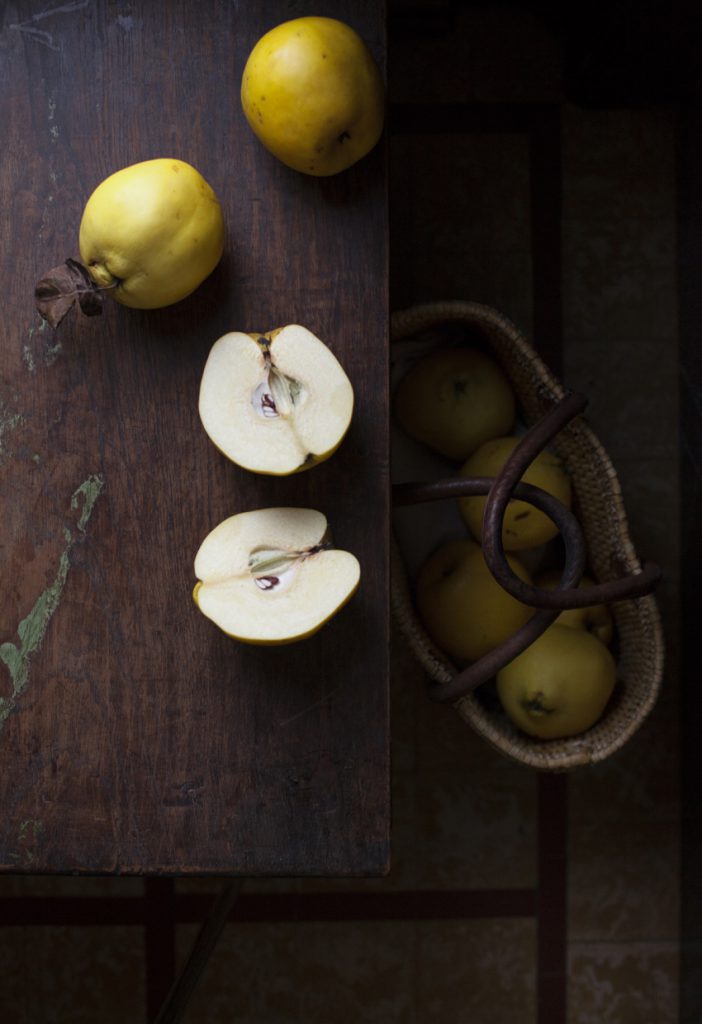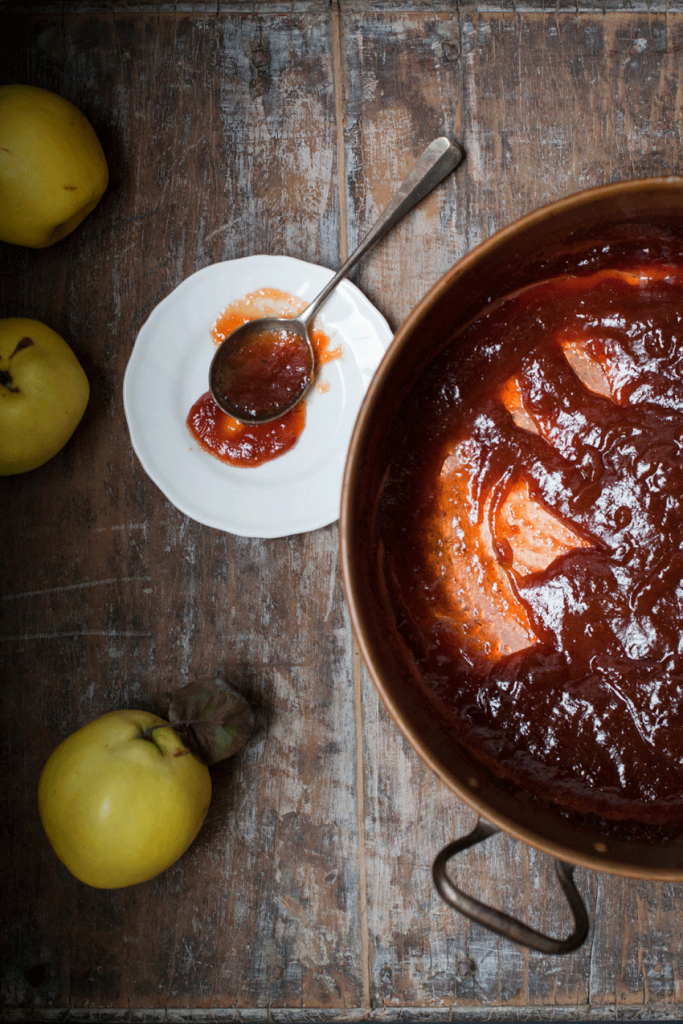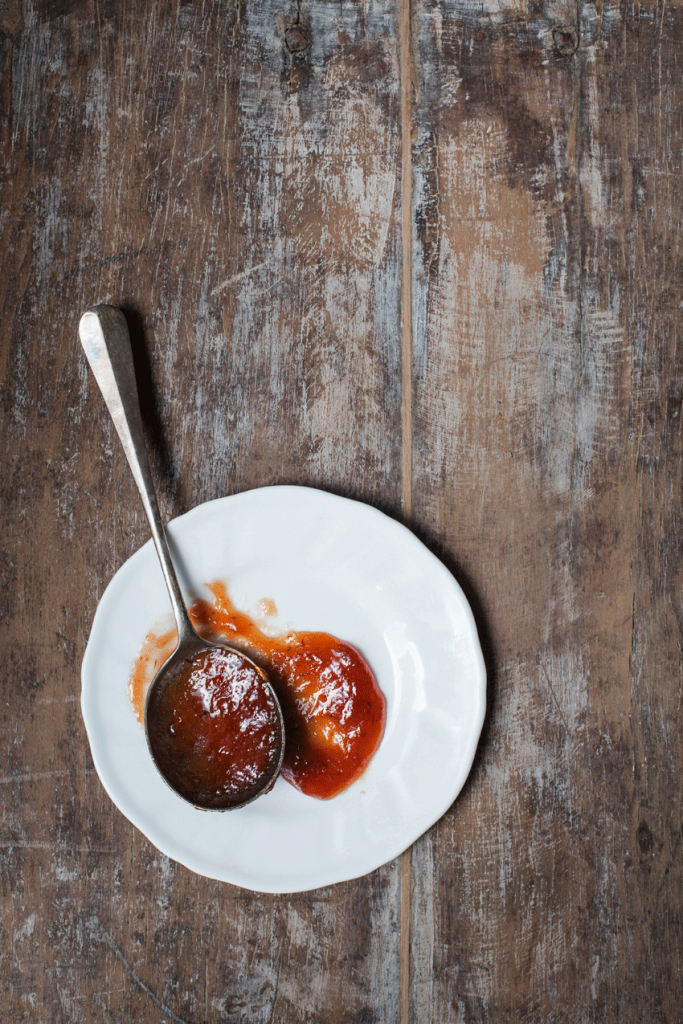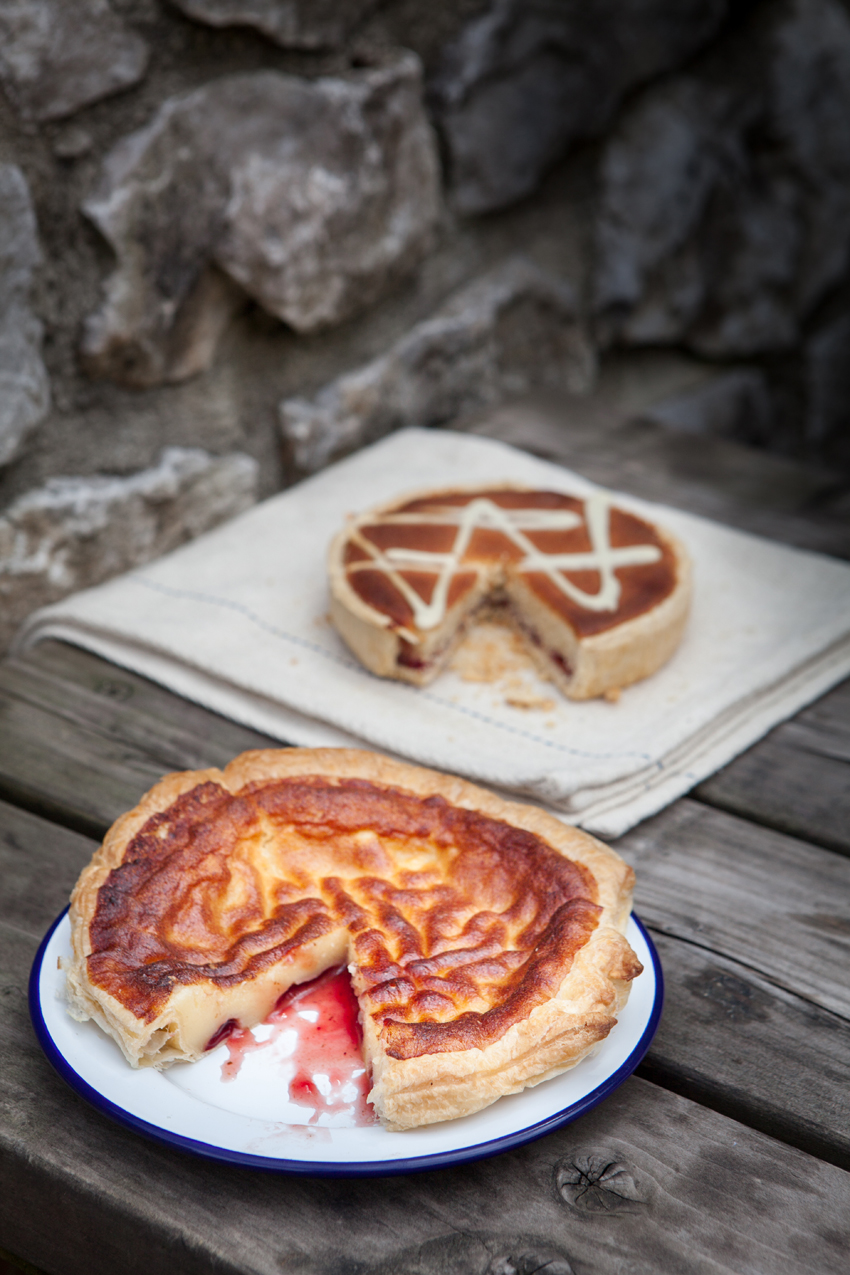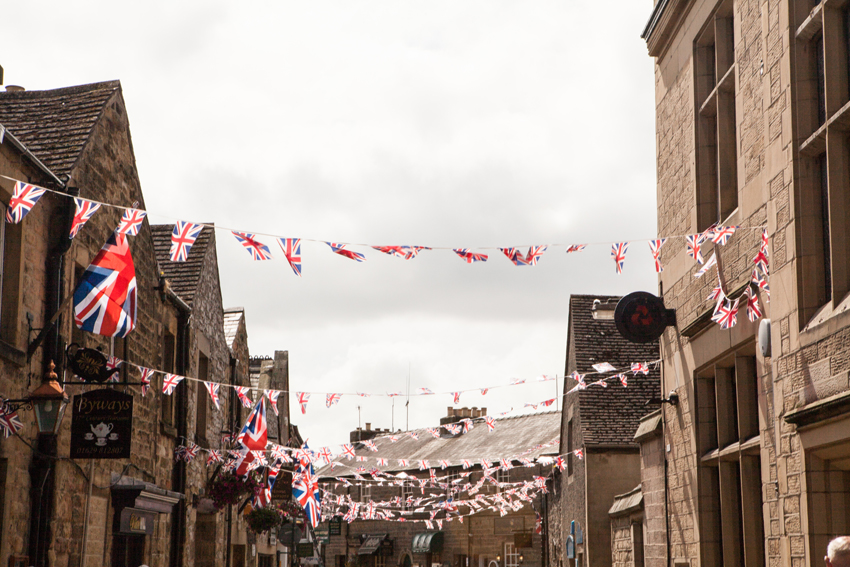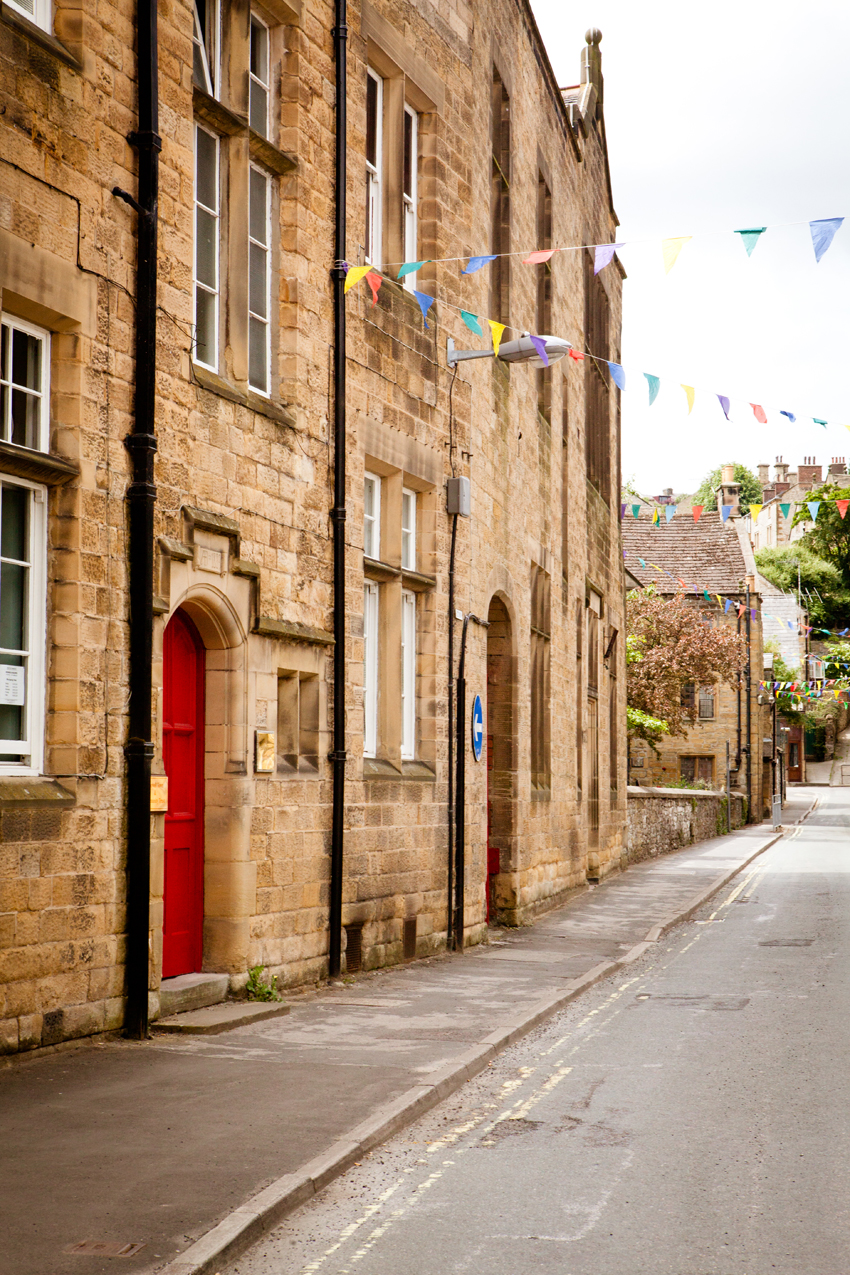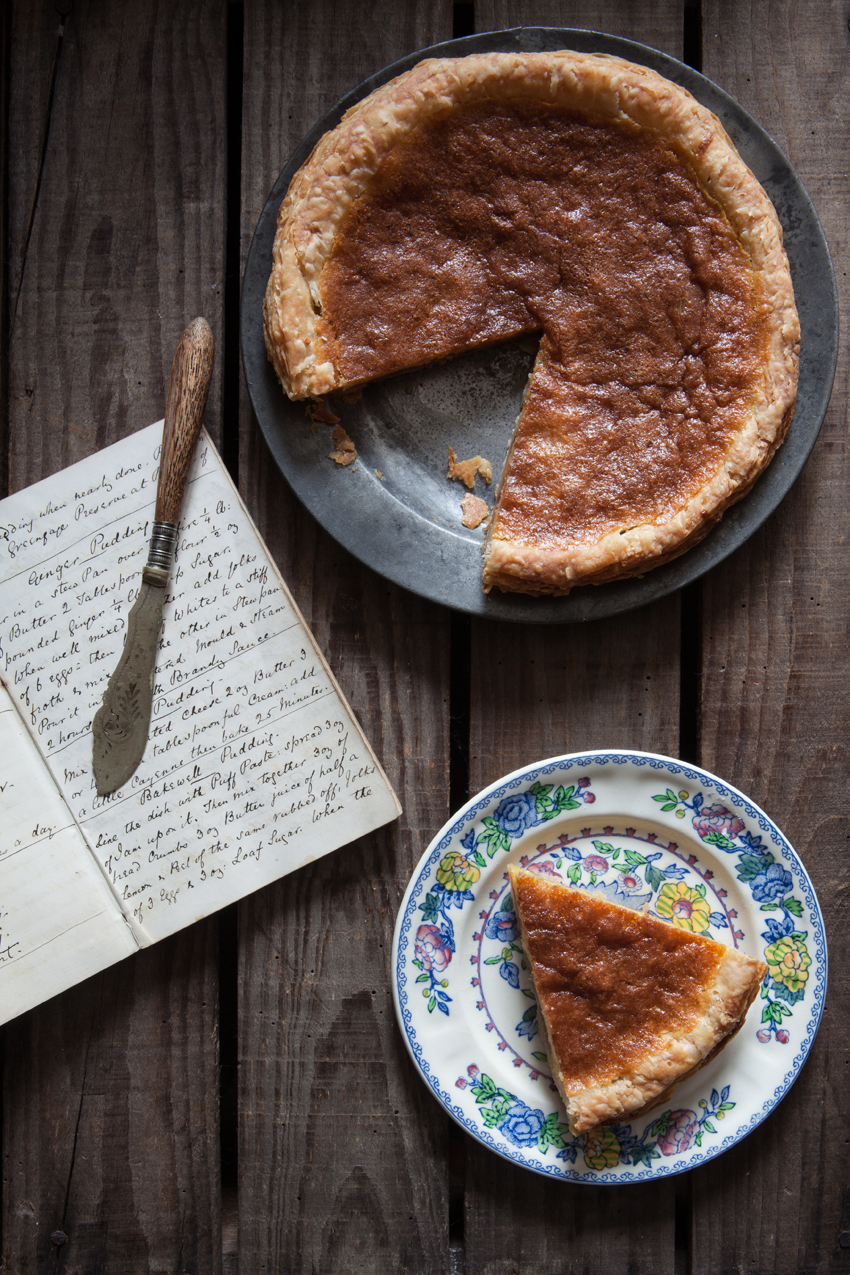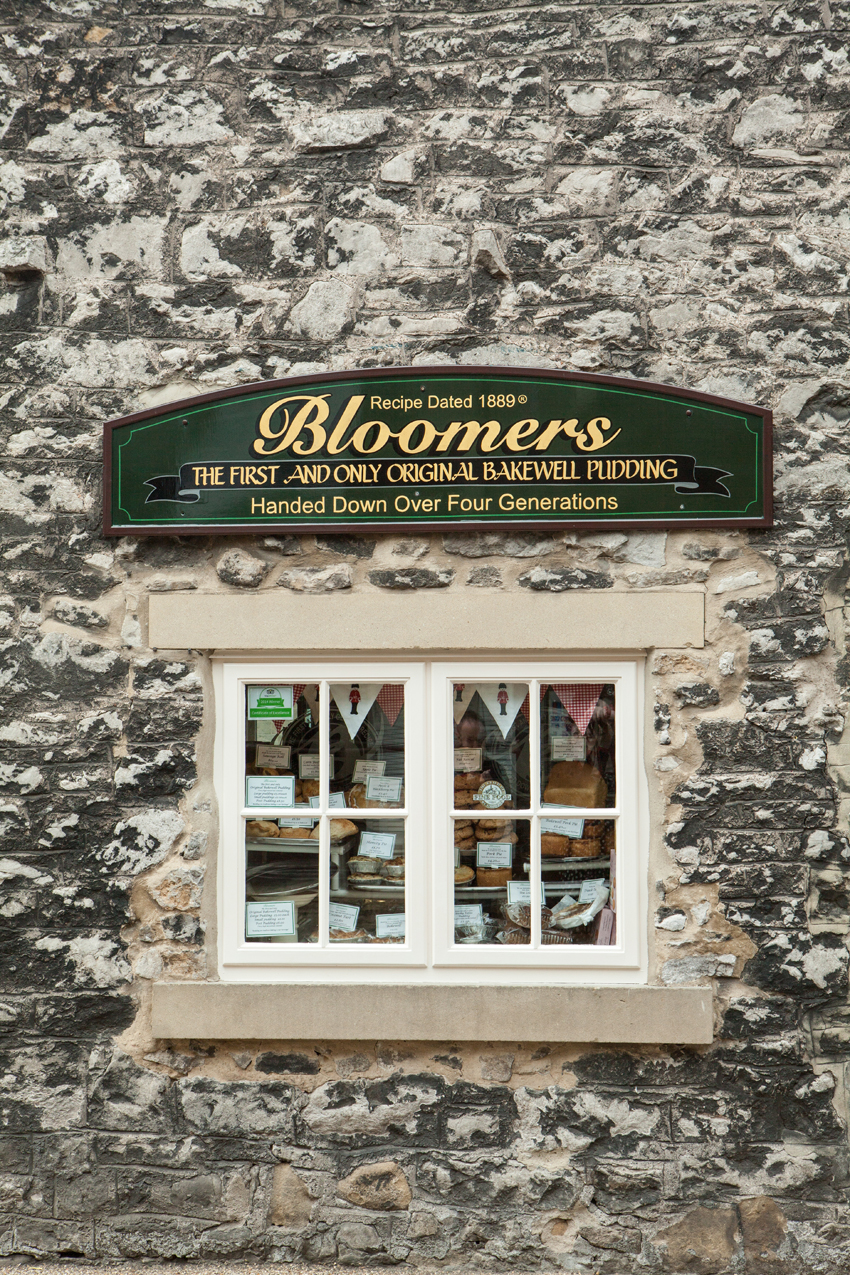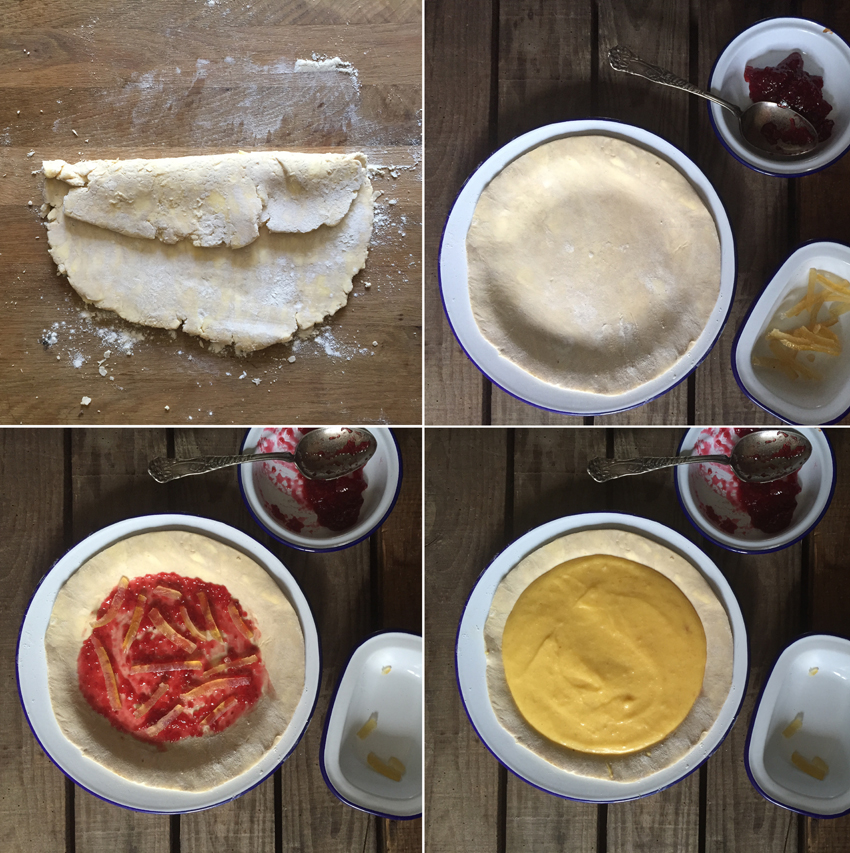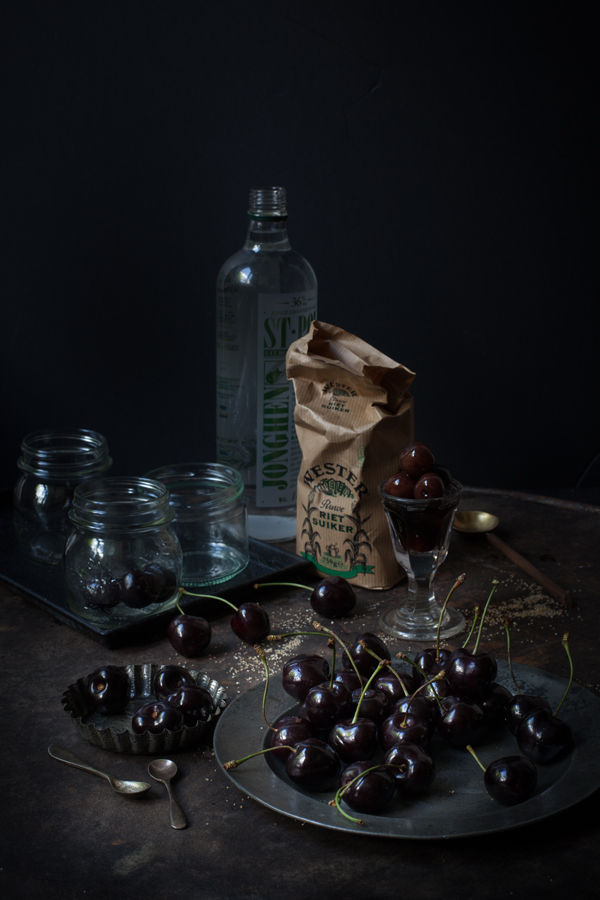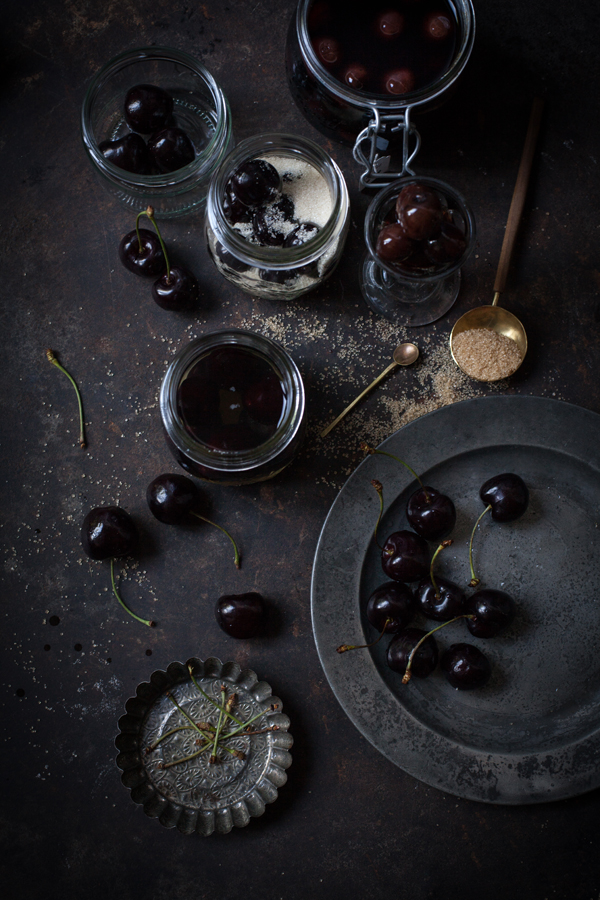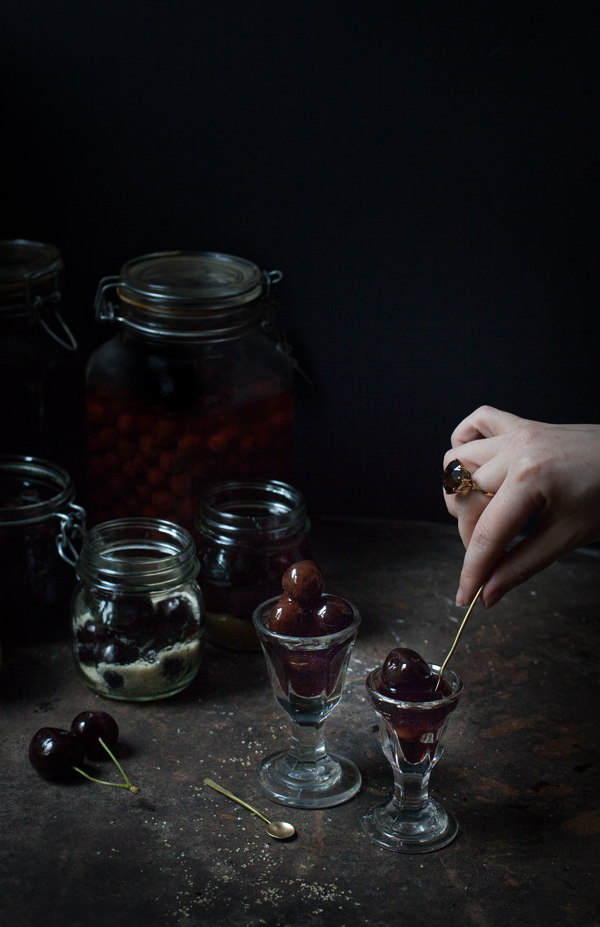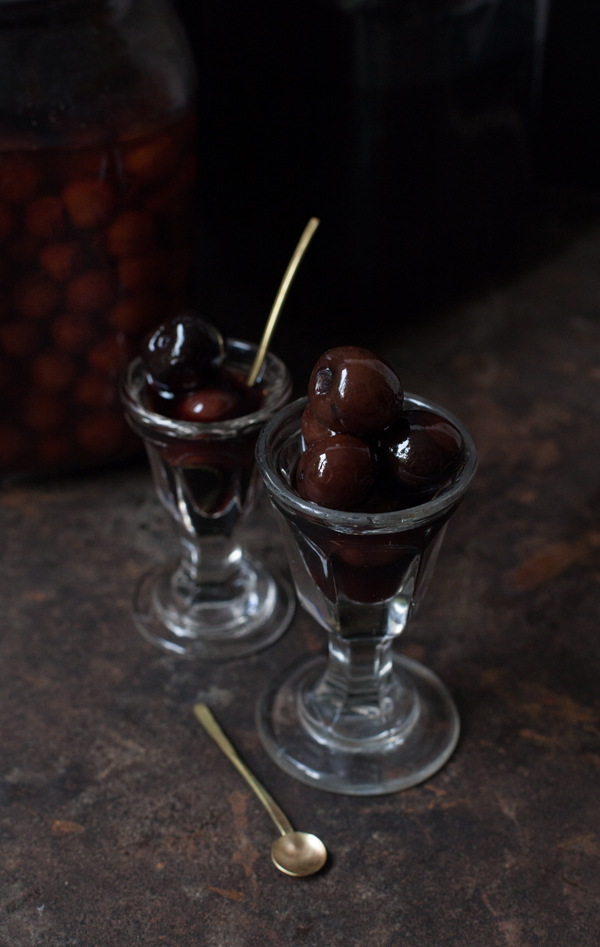The post How to make Quince Cheese appeared first on Miss Foodwise.
]]>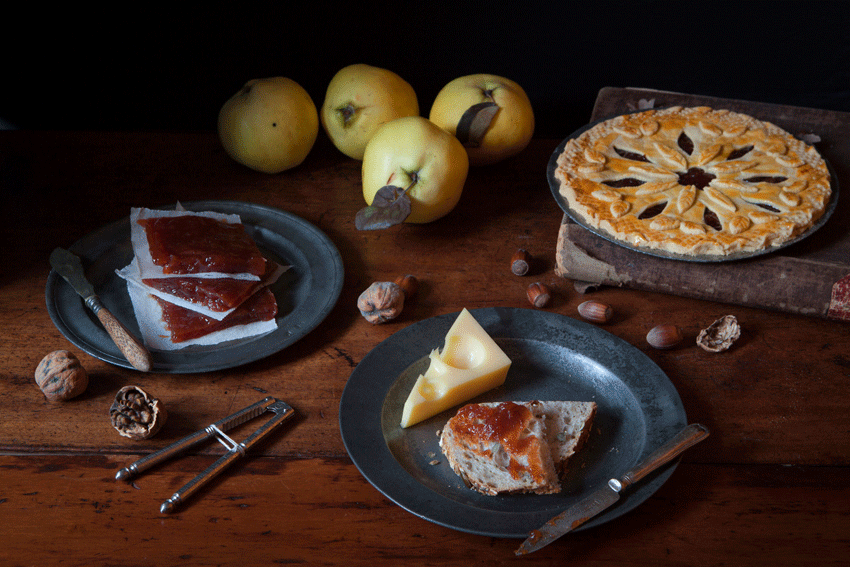 I’m not the biggest fan of sweet desserts after mains, I prefer an afternoon tea where the treats become the star of the show. That way you can enjoy them to the full and they do not become that thing you eat last when you’re actually too full to enjoy it. For an afternoon tea you can dress up, wear a hat, and pretend to be a lady of good breeding. Drinking tea with your pinky in the air, back straight, having polite conversations and enjoying the experience of eating from fine bone china. I’m also a sucker for a multi-tiered cake stand, and for clotted cream – lots of it.
I’m not the biggest fan of sweet desserts after mains, I prefer an afternoon tea where the treats become the star of the show. That way you can enjoy them to the full and they do not become that thing you eat last when you’re actually too full to enjoy it. For an afternoon tea you can dress up, wear a hat, and pretend to be a lady of good breeding. Drinking tea with your pinky in the air, back straight, having polite conversations and enjoying the experience of eating from fine bone china. I’m also a sucker for a multi-tiered cake stand, and for clotted cream – lots of it.Cheese and biscuits are my choice of afters and with a decent fruit cheese and port this quickly becomes my perfect kind of dessert.
Fruit cheeses are reduced jams or pastes. Centuries ago they were served after dinner as a digestive and they were often prescribed by apothecaries to cure minor ailments. The fruit paste was often pressed in a mould with fancy engravings and could look rather stunning. Moulds of this sort are rare to come by, I only know one person who has a mould and I believe he even carved it himself.
Although fruit cheeses should be thick and hold their shape, they should still be spreadable. You can make them into small cake trays for a nice shape or just in a large tray, you can then cut squares of the fruit cheese to wrap them and keep them. They are the most delectable accompaniment to blue cheese, but they can also be eaten all on their own, as a sweetie. A nice idea if you want to know what your child puts in its mouth, factory made sweets can contain all sorts of horrible additives. But it’s still sugar, make no mistake, to call it healthy would be wrong, but eaten and treated as a treat it is just fine.
My favourite fruit cheese is made of Quince. Quince are usually cooked and conserved. They look like otherworldly lanterns, large yellow pears with a strange downy covering. Raw they are considered quite unpalatable because of their tartness, but they are high in pectin which makes them ideal for making jams, jellies and fruit cheese. The pectin is most strong in the pips of the fruit, often ground up pips would be used to set other jelly like creations. But this is something I would not recommend you do as the seeds contain nitriles which turns poisonous when it comes in contact with your guts enzymes and acid. A few pips from your batch of quince are fine, just don’t chuck in a jar of ground up pips.
Quince and quince cheese was popular all over Europe since Medieval times. In Spain they call it ‘Membrillo’, in Italy ‘cotognata’ from the Italian word for quince ‘mele cotogne’ quince apple, the French call it ‘cotignac’ or ‘paté de coing’ from the French ‘coing’ for quince. Quinces are responsible for the word marmalade as their Portuguese word is ‘marmelo’ and they were made into fruit cheeses named marmalades.
Not only quince are used, every type of plum works great too. The Spanish love it with Manchego cheese, others prefer it with sweet cheese curds, but I prefer a good blue cheese like Stilton – the king of blue cheese, Shropshire Blue or Devon Blue.
Recipes for fruit cheeses are plentiful in historical cookery books. It was common to add red sandalwood or cochineal (a red colouring made from the cochineal beatle) to food to enhance the colour. Cochineal, also known as Carmine, was particularly popular in the Georgian and Victorian era but also in Tudor times the colouring of food was a very common practice in the kitchens of the King.
Cochineal wasn’t only used to colour food, it was also used as a textile dye and more recent to give make-up like red lipstick its beautiful red and pink colour. (Since I’ve been wearing red lipstick for half my life I’ve probably eaten quite a few of these little cochineal bugs). I have a small batch of the dried beetles sitting in a jar in my kitchen now, ready for making cochineal. I own a small Victorian Cochineal bottle and it is quite amazing to see the dye has not lost colour all these years. That must be the reason cochineal is considered the best red dye. In Italy the cochineal bugs are used to dye Alchermes, a liqueur popular in Tuscany and other regions. That liqueur is then used to dye food too, cake or lady fingers are often soaked in it. The Italian version of a Trifle, the ‘Zuppa Inglese’ is made with sponge cakes or lady fingers soaked in Alchermes.
See below a period recipe from Mr. Borella, who was the head confectioner to the Spanish Ambassador in England around 1772. He also uses Cochineal to colour his quince cheese.
To make the paste of a fine red, bake the quinces in the oven a long while, then peel and sift them in a strong hair-sieve; dry the marmalade over a slow fire a little while, to about half the consistency of a paste then to redden it the more, keep it a good while on a slow ashes-fire, stirring some time; and to add to this redness, put a little steeped cochineal, and reduce it on a flow fire, to a thick paste; that is, when it loosens from the Pan; put as much sugar as marmalade, or paste, soak it a little while on the fire and let it cool, just enough to work it well with the hands, and finish directly as usual.
Mr. Borella, The Court and Country Confectioner, 1770
The recipe below can be used two ways. You either jar the jam before it goes into the oven to dry and use it as a filling for pies (see the next posting), or you place it into the oven so it becomes fruit cheese.
The trick to get a beautiful dark colour is to cook the quince and the jam slowly and for a long time. The peel I’m told is also adding to the reddish colour so I never peel the fruit.
Quince cheese
What do you need
- 3 large quinces, 600 g, roughly chopped (you can remove the core but I do not for the extra pectin the pips contain, just take off the black crowns)
- 1 cinnamon stick
- 2 cloves
- peel of 1 lemon
- raw cane sugar, equal amount to the pulp
Method
In a large saucepan cover the quinces with water and boil until tender with the spices. Remove the quinces from the saucepan and save the spices.
Blend to a puree with cores and all to get a good set using a stick blender. Measure the quince puree and add the same weight in sugar plus the spices you saved. Proceed as for making jam, being careful as quince jam tends to spit. A way around this is to not make the jam on a hob but first bring it to a boil and stir for 5 minutes, remove the spices, then transfer the pan covered in greaseproof paper into the oven at 160°C. Leave there for 45 minutes, then check on it, it should be thick and perfect for a pie filling.
Let the puree cool so it is cold enough to handle and strain through a sieve, pushing it through with a rubber spatula. Use for pies or jam or proceed to dry the make the fruit cheese by preheating your oven to 130°C if you haven’t already.
Transfer the jam to a shallow tray which you previously lined with greaseproof paper. You can make it as thick if you want but 1 cm is definitely the minimum. Let the paste dry until you feel it is becoming firm. There is no saying how long this will take exactly but it will be around an hour at least for sure.
When ready, leave to cool and then wrap in clean greaseproof paper. Place in an airtight container and it will keep for a few months. It might cristalise a little, but that doesn’t make it bad to eat.
You want it super red?
You might have a hard time finding the cochineal beetles but you can use all natural red beetroot powder!
This is nice as an edible gift to someone special!
You might also like
Damson cheese >
Quince Rataffia >
Quince tart Coming next week!
And check out Jul’s Kitchen roast quince with rice pudding here >
The post How to make Quince Cheese appeared first on Miss Foodwise.
]]>The post Bakewell puddings and Bakewell tarts appeared first on Miss Foodwise.
]]>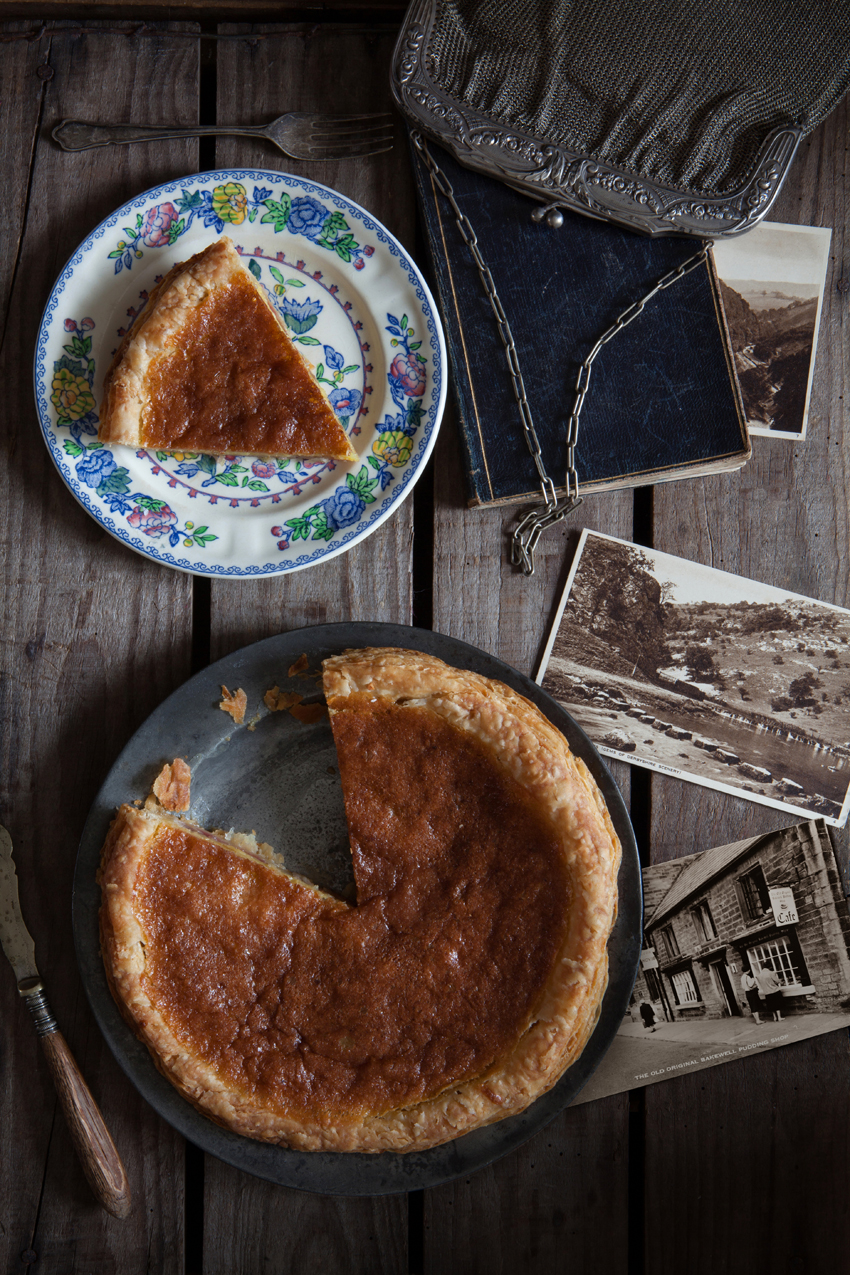
It was Bakewell tart on Great British Bake Off yesterday last week! And when Mary said this is what a Bakewell tart should look like… I had to disagree. Traditionally early Bakewell tarts did not have a topping of icing. Nor do they have that lonesome cherry which we associate with cheap shop bought mini-bakewell tarts. Mary’s Bakewell tart didn’t have the cherry but did have the icing with a fancy pattern. It looked the part, don’t get me wrong, but if you visit the town of Bakewell you will see that proud Bakewell tart bakers clearly state that they do not add icing to their Bakewell tarts as icing is not part of the original recipe… But what is the original recipe? When does it stop or start being original? It’s a tough question.
And then there’s that other Bakewell bake… The Bakewell pudding!
Imagine a pub in a quintessentially English village: you enter with an appetite and the special on the menu is a pudding named after that village. You just have to try it, don’t you? And so the Bakewell pudding rose to fame. Even though Wonders of the Peak, the first travel guide to the Peak District, was written by Charles Cotton in 1681, tourism reached a high in Victorian times, helped by the development of the railway and an increasing interest in geology. Victorians also came to ‘take the waters’ in the spa towns of Buxton, Matlock Bath and Bakewell.
Today, when visiting the Derbyshire village to which this pudding owes its name, you can’t ignore the many quaint-looking bakeries claiming to present to you the one true Bakewell pudding or tart. Its heritage has intrigued me for years, so naturally when I first came to visit Bakewell, I needed to explore and also perhaps ask some questions in those Bakewell bakeries. Recipes for this type of pudding pop up in cookery books and manuscripts as early as the 1830s, but there are a number of versions of this pud and it is not clear who first linked it with the little Peak District town. Most probably it was one of the inn landlords of which the legend speaks: it is said that the pudding was invented in the White Horse Inn (now the Rutland Arms) by a waitress called Ann Wheeldon who made a mistake while preparing a pudding from the recipe book of mistress Ann Greaves. Mrs Greaves’s great-great-great-grandson believes the pudding must have been created in the 1850s. This is, however, quite a few years later than other Bakewell pudding recipes and about the date of a manuscript recipe I have in my possession by a person from Oxfordshire, which is not at all in the north. This means that by the 1850s the pudding was already quite well known and so was the recipe. The Bakewell pudding also appears in American cookery books before the 1850s.
As for the Bakewell tart… it seems it is a more recent bake. If you look at how both these bakes are made, you will see that the pudding is the kind that was made for a hundred years before it became known as a Bakewell. But the Bakewell tart is truly Victorian. You can read more about the Bakewell pudding in my book Pride and Pudding of course, but I’l share with you this recipe which is a very old Bakewell pudding recipe. This is a descendant from a much older pudding and that is what makes this bake so exciting. Truly. You will never look at Bakewell pudding the same way after you’ve bashed some apricot kernels with rosewater for the filling.
Bakewell pudding
Makes 2 puddings in 23 cm (9 inch) shallow plates
- 25 g bitter apricot kernels
- 1 teaspoon rosewater
- 110 g clarified butter, melted
- 110 g raw sugar, powdered in a food processor
- 5 egg yolks
- 1 egg white
- 1 quantity puff pastry or rough puff (the recipe is in my book)
- 2 tablespoons raspberry jam
- 50 g candied lemon peel, cut into strips
Preheat the oven to 180C (350F).
Blanch and skin the apricot kernels by pouring boiling water over them to make the skins come off. Rinse under cold water and dry them using a clean tea towel (dish towel) to rub off the last of the skins.
Using a mortar and pestle, pound up the blanched apricot kernels with the rosewater. This will prevent the apricot kernels from producing oil and also will add a heavenly scent. Transfer to a bowl and whisk in the clarified butter and the sugar, whisking until creamy. Add the eggs and whisk to combine.
Don’t be alarmed if the filling seems runny to you, it is normal. Line a pie dish or plate with the puff pastry rolled out as thin as you can manage and spread the raspberry jam over it, leaving a 2 cm border that will become the rim. Neatly arrange strips of candied lemon peel over the jam, then gently pour in the filling mixture.
Bake in the bottom of the oven for 15 minutes, then move to the middle of the oven and bake for 15 minutes more or until the pastry is puffed and golden brown.
Serve on its own or with fresh raspberries.
Finally, the last few spots for our Creative Gathering are up for grabs, see here for more information or get on the waiting list for the spring edition!
You might also enjoy
A friendly reminder that it is time to make Damson Cheese >
Get ready to make your plum pudding! >
More pudding? Cabinet pudding to use up stale cake >
The post Bakewell puddings and Bakewell tarts appeared first on Miss Foodwise.
]]>The post Cherry brandy… the first step towards winter appeared first on Miss Foodwise.
]]>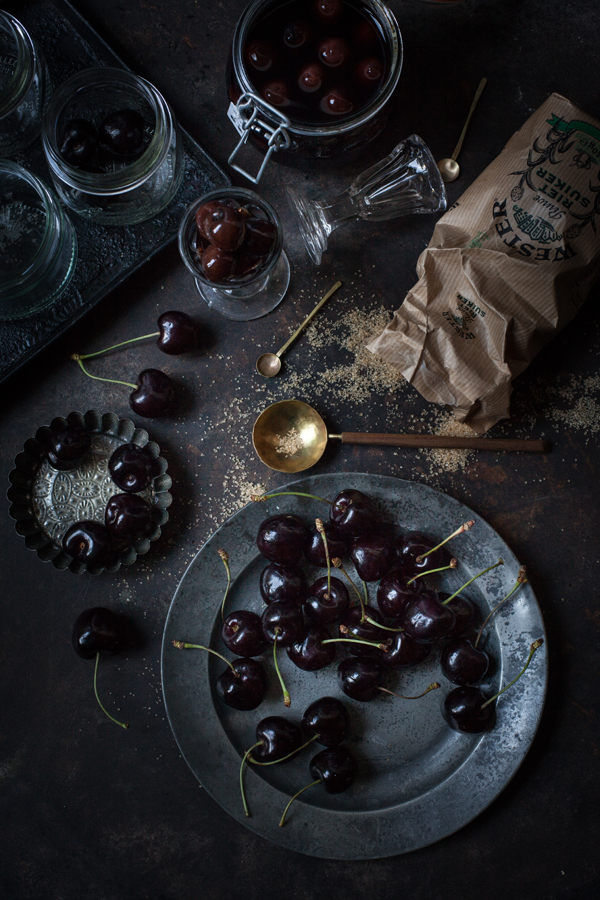 Preparing the cherry brandy or ‘Kriekenborrel’ as we called it in Belgium, is the first step towards Christmas and winter for me. On Christmas eve when I was a child, I was allowed one single drunken cherry in a small dainty glass as a treat. This is how memories are made, and how time and time again when Christmas comes, you need certain flavours to transport you back to the past. Nostalgia and Christmas go hand in hand. It is the one western tradition that is still going strong. People prepare things like this cherry brandy and plum pudding months in advance. The anticipation grows in the jars, and by every spoonful of brandy that is poured over the pudding every week.
Preparing the cherry brandy or ‘Kriekenborrel’ as we called it in Belgium, is the first step towards Christmas and winter for me. On Christmas eve when I was a child, I was allowed one single drunken cherry in a small dainty glass as a treat. This is how memories are made, and how time and time again when Christmas comes, you need certain flavours to transport you back to the past. Nostalgia and Christmas go hand in hand. It is the one western tradition that is still going strong. People prepare things like this cherry brandy and plum pudding months in advance. The anticipation grows in the jars, and by every spoonful of brandy that is poured over the pudding every week.Preserving fruit in ‘Jenever’ which is almost identical to Gin, has been a custom in our parts for many decades. It was particularly popular in the 1950’s when my grandmother was young. Because my mother grew up with it, it was sentimental to her, which is why she taught me how to make it. I still have the last jar of cherries my mum and I drowned in Eau de Vie in 1998. It is quite special, because the jar holds memories as well as cherries. In my kitchen I have jars from 2006, 2010, 2011 and 2013. Some I give away, ladling the cherries and booze out into smaller jars to decorate with a ribbon and the date. They go to people I know will appreciate my precious preserve. Because I part with memories of making them and hope they will be cherished.
My cherries of choice are dark English cherries from Kent. Their flesh is thick and eats like a plum, their juice is deep red like the liqueur it produces after months of ripening. The ones you see pictured here are of the ‘Regina’ variety and grown in Kent. It’s good to see Kentish cherries on the shelves of English supermarkets. This means that the farm will have a set income and that it is worth to harvest the fruit. Far too foo often fruit is left on the trees because harvesting would cost too much. And although I’m not a particularly big fan of supermarkets, not everyone lives near a farmshop or market where you can obtain these beauties and other produce grown on local soil.
In Belgium it is hard to find home grown cherries too, again the expense of harvesting and demand are too high. Most of our cherries come from Turkey. They are usually quite flavourless and dull. When I was a child, we had cherries from Belgium and France in our shops. One particular type, which we called white bellies, were my absolute favourite. They reminded me of the red blushing apple of snow white so I pretended they were tiny apples. You see them rarely these days which is a terrible shame. It is those wonders of your childhood you miss when you grow up. Fruit you got every season which is now only available rarely and at premium prices in premium stores. The farmers wife at my local farmshop tells me that when they go to the fruit and veg market early in the morning to buy the produce they do not grow (they are a dairy farm), they see less and less older farmers selling the more rare fruit like mirabelle plums, sloes and medlars.They harvest them from their farm hedges from trees much older then they are themselves. But as these older farmers retire, so is lost the supply of these most wonderful fruits. I appreciate the farmshop for buying the produce from these old men, that way it is still possible to see more of the season than just what the supermarkets wishes us to see.
What about the future of cherries and other home grown fruits? One of the fears of Brexit in Britain is that even less home grown fruit will be harvested. Most fruit pickers are immigrant workers because English (and Belgian people too for that matter) don’t want to do the hard work. So the question is, will there be an even further decline in home grown fruit? Well… Britain hasn’t left the EU yet and we can’t know now what will happen later. So lets just buy local when we can.
In the 19th century most fruit was picked by the poorest people in the cities. Just like with hop picking, families would move out of towns like London to spend the summer by the orchards. Although it was hard labour, being out of the city meant that the children had clean air and nature to run and play in before and after work. They saw it as a vacation, a working holiday. The money earned would go to the mother, men usually stayed in the towns to work, and the women would use the money to buy well needed items like new shoes and clothes for the children.
The past 50 years 90 % of the cherry orchards have disappeared. Before the second world war there were about 40 000 acres of cherry orchards in England alone. These were mainly in Kent, Worcestershire and Herefordshire.
The labour was very intensive as the trees were very high, too high to cover the crop from the birds. Cherry pickers would climb on very high ladders with baskets tied to their waists. Nowadays trees are kept smaller so they can be managed more easily and trey can be covered with netting to keep the birds from stealing or damaging the entire crop. When you drive through Kent at this time of the year, you can spot the netting. It looks like a giant spider has creeped out of that Harry Potter book to cover the trees in her enormous web.
To be able to enjoy cherries for longer, drowning them in strong alcohol really is the best way.
As true and loyal readers of my blog will know, I have featured a recipe for my family cherry brandy before. This one is quite the same, but using more readily available alcohol and more sugar so it keeps for longer. Traditionally this liqueur should be made with sour cherries, not sweet, but it works just fine with either.
A little news, I am organising two creative gatherings in the autumn. One will be a two day retreat in Tuscany the last weekend of october, the other is a one day in Dorset end of november. If you are interested, details will be shared in the next weeks but you can already email me to be put on the list without obligation. We will be cooking, photographing, styling, eating, drinking, learning and we will also have the most wonderful time with like-minded creatives.
On to the recipe now
What do you need
sour or sweet cherries: 1kg
A neurtal alcohol of minimum 35%
(vodka, jenever, gin, everclear, eau de vie,…)
raw cane sugar: 500 g
brown sugar or mollasse: 1 tablespoon
glass preserving jars
Method
Rinse the cherries well and pad dry with kitchen paper. Remove the stalks carefully without damaging the fruit.
Layer the cherries with the sugar, pour over the alcohol and close the jar.
Put in a dark place at room temperature – a cellar is perfect – and shake every day for a week
Forget about the cherries until christmas or thanksgiving!
Enjoy in a dainty glass or add them to your cake batter (don’t forget the kernels!). If you got some leftover from last year, toss on your ice cream. Also a treat baked into a batter pudding or clafoutis.
You might also enjoy
Cherry tart and prostitution >
The post Cherry brandy… the first step towards winter appeared first on Miss Foodwise.
]]>